BRUCE SCHWARTZ, DIRECTOR OF THE IDEA AND DESIGN LAB: 10%? Possibly. However, it certainly can’t be more than 15%.
Approximately one year ago, I was asked to lead Peck’s nascent Idea & Design Lab (ID Lab). Yes, at first, I was freaked out. Then, I became excited. Then, freaked out. Then, excited. You get the picture; however, you may be asking why the roller coaster ride of emotions?
Having been on the planning committee for the lab, I had an insider’s perspective on what this leadership role would entail. Likewise, I knew what the ID Lab would mean for The Peck School as we continue to embrace, promote, and foster the use of the design process for student-centered learning across the K-8 curriculum. Thankfully, we had an expert team of people on the committee to offer informed perspectives, insights, and experiences.
The Peck School has a nationally recognized professional development program, known as the Deep Dive. Well, I was about to dive very deeply into some highly unchartered waters!
After visiting several well-equipped schools and maker space facilities, a knee jerk reaction would have been to delve into evaluating and purchasing hardware. After all, that would seem the obvious low hanging fruit. However, buying hardware without a plan for how it could support our curriculum seemed a big mistake. First and foremost, we needed to understand the “why”, “how”, and “what if” before we took the hardware plunge.
I was in need of some enlightenment and professional development…
The answers to my questions came increasingly into focus while I was attending an engaging and interactive workshop at Harvard Project Zero’s Agency by Design (AbD) initiative. Essentially, AbD has developed a pedagogically sound design framework that hones in on three core capacities:
- looking closely (why),
- exploring complexities (how),
- and finding opportunities (what if).
Right away, I realized that this framework aligned well with our slogan and mission for the ID Lab - “Empowering you to take ideas further.” What’s more, it aligned with our mandate for students when they use the Lab – to think deeper by questioning and doing. AdB is a framework that can be applied to K-8, both in the humanities and STEAM classes, alike.
School and maker facilities visits and conversations. Check!
Workshop and professional development around student-centered learning within a design framework. Check!
What’s next?
With the help of several team members at Peck, coupled with insights and knowledge gleaned from many school visits, conversations, and trusted online resources, I was ready to pull together and purchase an extensive list of hardware and materials.
Now, a new challenge…
Having never used a sewing machine, soldering iron, foam cutter, or plexiglass bender among other tools, it was time to dig in and learn. Although I had novice experience with 3D modeling and printing, as well as laser cutting and etching, it was time to take it up a notch. But how?
Taking a lead from my students – who are resourceful, independent learners – I turned to YouTube. I watched dozens of hours of tutorials. If you can’t find a good video tutorial on YouTube, it probably does not exist. And, yes, I drove my wife crazy - start, watch, go back, pause, try, fail, a few choice words, go back, watch, pause, most likely fail again, a few more choice words, and eventually succeed.
I embraced the process because the finished product is a nonstop moving target. There will always be more to learn - new technologies, new capacities, new techniques, new tricks and workarounds.
10%? Possibly. However, it certainly can’t be more than 15%.
Noted Australian constructivist educator, designer, and blogger, Nigel Coutts, wrote in a blog titled The Beauty of Unfinished Work, “There is a danger in seeking finished perfection in all that we do. There is a risk that our students will focus solely on the attributes that define a finished piece and overlook the importance of the process that leads to it.”
So why have I written, “10%? Possibly. However, it certainly can’t be more than 15%?”
Simple - I am an unfinished product and I am only about 10-15% of the way into my journey. I may never get much closer as the target continually moves outward. This is fine by me, because I enjoy and embrace the process and the learning!
+++++++++
Coutts, Nigel. “The Beauty of Unfinished Work.” The Learner's Way, 25 July 2015,
thelearnersway.net/ideas/2015/7/25/the-beauty-of-unfinished-work.





